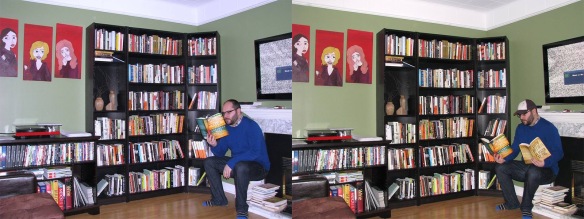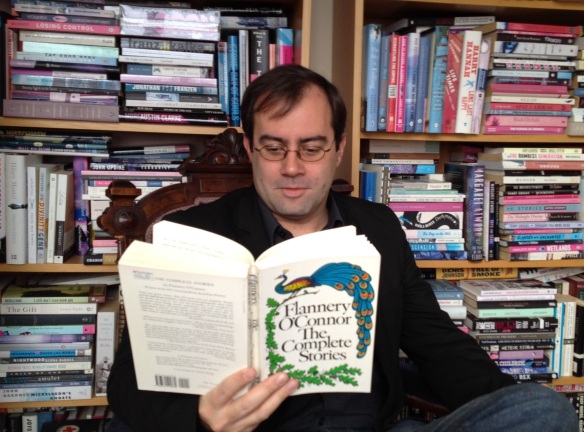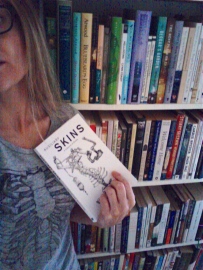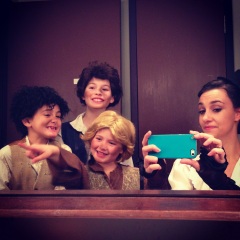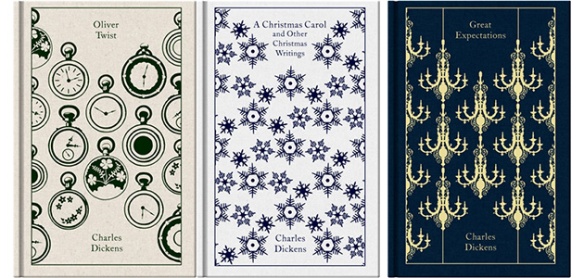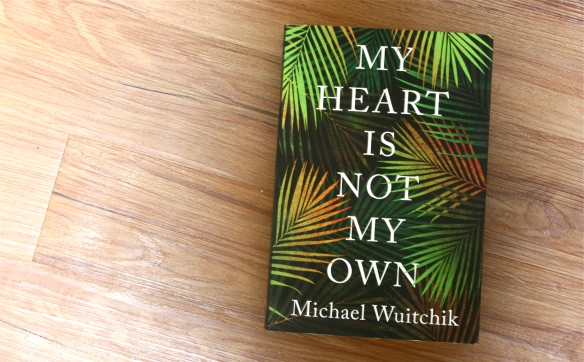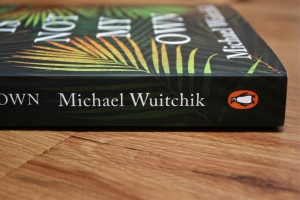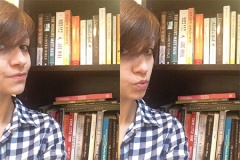 Happy end of the year! 2013 is slipping out from under us as we speak and it is a perfect time to reflect on all the good, the bad, and the inspiring reads we all experienced this year. I already have a wish list of 2014 titles that I’m anxious to get my hands on. Another year, another million stories to choose from. It’s something you can always count on.
Happy end of the year! 2013 is slipping out from under us as we speak and it is a perfect time to reflect on all the good, the bad, and the inspiring reads we all experienced this year. I already have a wish list of 2014 titles that I’m anxious to get my hands on. Another year, another million stories to choose from. It’s something you can always count on.
SHELFIE noun, a photograph that one has taken of oneself and their bookshelf, or their bookshelves on their own, typically one taken with a smartphone or webcam and uploaded to a social media website.
This year, in honour of the Oxford Dictionary’s Word of the Year (Selfie!), I’ve asked some of my fellow bloggers and publishing professionals to throw their social media dignity out the window and let me post their best shelfies! The art of the selfie is something I have definitely not mastered, though as word of the year (beating out heavy hitters like twerk, binge-watch and schmeat for the title), it’s probably a skill I should hone and list on my resume. But a shelfie… now that is a whole different animal. Now, I realized very quickly that asking for a shelfie is not an easy request for a book lover. A singular photo can only capture so much! What section of your shelf do you choose to capture? What angle to you decide on? Because we aren’t just talking about ourselves here. These are shelfies, which means your photographic artistry, natural beauty, AND literary choices are up for scrutiny. But these guys were great sports with sultry stares, duck face, poised reading stances, and some great auto-timer action and their shelfies are definitely something to be proud of. In the new year, do yourself a favour and read these blogs! These darling who happen to be my fellow Short Lit Crit contributors (Chad Pelley, Andrew Wilmot, Steven Beattie, Steph Vandermeulen, and Bryan Ibeas) basically have their own personal libraries in their homes, and obviously know a thing or two about books. Click their photos for links to their blogs, but not before admiring the personal portraits they so happily provided me:
My reader resolution for 2014 is a two-parter:
1. Read more Classics (at least 12, one for each month)
2. Get a bigger bookshelf. And fill it (so that I can take a better shelfie next year)
3. Read more book blogs (like the ones above!)
4. And last but not least, keep writing and book-pimping because there is nothing more exciting than sharing a great story with someone else.
Tell me your reader resolutions! What’s on your list this year? Have you ever taken a shelfie?

